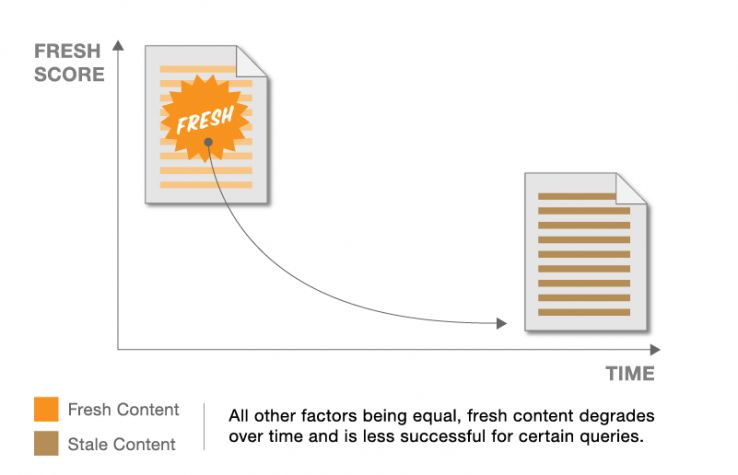Content creation—it’s the linchpin of our B2B content marketing strategies. Refreshing existing content is a massive opportunity, playing an integral role within your always-on content marketing strategy. You know your buyers are becoming increasingly self-directed in their search for answers, and you’re creating SEO-informed content to satisfy their queries. #2 – Refreshing allows your content to grow WITH your audience. Content marketing is simply modern marketing. To know where to focus your refreshing and optimization efforts, you need to know how your existing content is performing with an audit. By auditing your current content for current rankings, position changes, traffic trends, and more, you can see which posts have the greatest opportunity. Refreshing is updating something that already exists. Repurposing is taking something that exists and using it to create something new. When should you repurpose and when should you refresh?

Content creation—it’s the linchpin of our B2B content marketing strategies. And 56% of B2B content marketers have upped their investment in content creation over the past year—more than any other spending area.
Without a steady cadence of fresh, quality content we can’t proactively adapt to our audience’s changing needs nor consistently reach, inform, engage, entertain, or inspire action within them. And for most content marketers, this effort is often grounded in creating net-new content. But freshness is the eye of the beholder; quality content creation doesn’t have to be done from scratch.
Refreshing existing content is a massive opportunity, playing an integral role within your always-on content marketing strategy. It’s not only more efficient to produce, but when done strategically, it can also boost results, improve user experience, and extend the life and relevance of the content you’ve worked so hard to produce.
As it’s been sung, everything old can be new again. Below are all of the reasons why you need to identify refresh opportunities and how you should approach it.
3 Reasons to Refresh Existing Content
#1 – Content takes time to “mature in search”—and needs to be nurtured.
SEO is a foundational element of content marketing. You know your buyers are becoming increasingly self-directed in their search for answers, and you’re creating SEO-informed content to satisfy their queries. But if you just focus on new content creation, you’re leaving potential on the table.
We’ve all experienced those sweet, near-instant wins in search results after a new post goes live. But typically, it takes time and smart optimization to gain consistent organic traction. In its post analyzing top ranking factors, Moz’s Jeff Baker discusses three different correlations between the age of a post and its keyword position. Based on their research, it took roughly 100 days or more for a new article to realize its full potential.

While pages need time to mature, without the proper nurturing their relevance can degrade over time; this is the “fresh” factor. Essentially, strategically updating older posts can improve rankings as search algorithms prefer fresh over stale content. Data and insight should guide the type of updates you make, but updates could include optimization tweaks to capitalize on new related keyword rankings, expanding or refining content around certain themes, and link building.
Once again, Moz illustrates how freshness can fade in the eyes of search engines.

#2 – Refreshing allows your content to grow WITH your audience.
Search is constantly evolving. Not only are search engines getting more sophisticated, but the way people are searching has changed as well:

COMMENTS